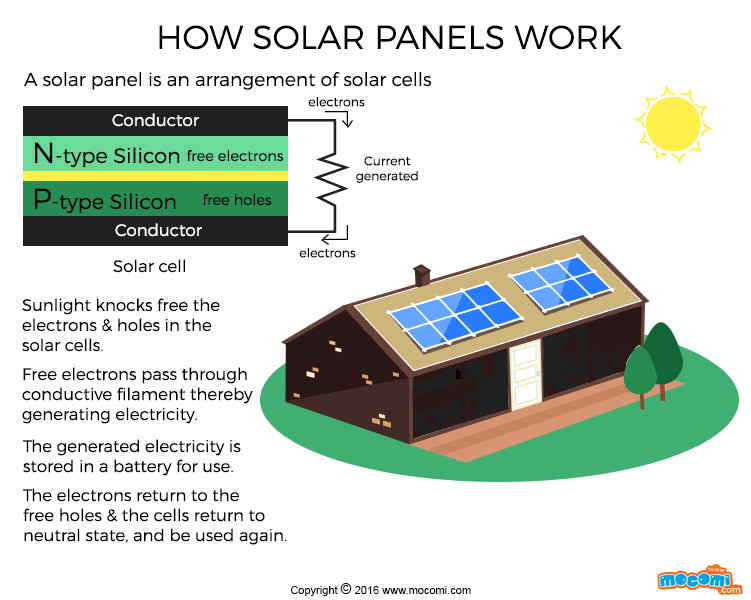Powering spacecrafts and calculators alike, solar panels are the ultimate solution to our power problems. Energy from the sun harnessed. What more could we ask for? And yet, even though we have within our reach a power source seemingly inexhaustible, it’s not what powers our homes.
Have you wondered why? And how does this work in the first place? What allows us to harness the sun’s power? Let’s find out.
What are Solar Panels?
Solar panels are nothing but a huge cluster of solar cells arranged systematically. The magic of generating electricity happens within these solar cells, also called photovoltaic cells. (Photovoltaic refers to the property of being able to convert light into electricity). Solar cells allow light to knock off electrons from their atoms, thereby generating electricity. That was the short version. Here’s a more detailed explanation-
How do Solar Panels produce Electricity?
Solar cells are sandwiches of conductive and semi-conductive materials. Most solar cells are made up of silicon, a semi-conductor. Thus, in a solar cell, semi-conductive silicon is sandwiched between conductive materials.
In its neutral state, each silicon atom is connected to its neighbors by 4 strong bonds, so no current flows. A solar cell uses two different types of silicon, called the N and P types respectively.
An N-type cell has free electrons, and a P-type cell has free holes (for the electrons to fit into).
When sunlight hits the solar panel, the electrons from the N-type cell are knocked out and are free to move around. Similarly, on the P-side, the light energy creates more holes. The free electrons move towards the N-type cells, whereas the holes accumulate towards the P-side.
Solar cells are designed such that the free electrons move in the only direction available, i.e. from the N-side. They pass through conductive filament, thereby generating electricity. After passing through the conductive filament, they return to the free holes from the P-side. Thus, the cell returns to the neutral state. Since there’s no permanent change in the cell, the cell has a very long shelf life.
Each cell only creates around ½ V of electricity, and hence, cells are strung together to make panels and generate a greater amount of electricity. Which is why a house powered by solar energy might need a solar panel spanning the entire rooftop. The electricity generated by solar cells is stored in batteries for later use.
Although we currently do not have cost-efficient technology to replace conventional power sources, if we do figure out, it would effectively solve all our power problems, at least into the foreseeable future.
Do you know What is Electricity? and Who discovered Electricity? Let’s find out!



@raya Thank you!
🙂
lol